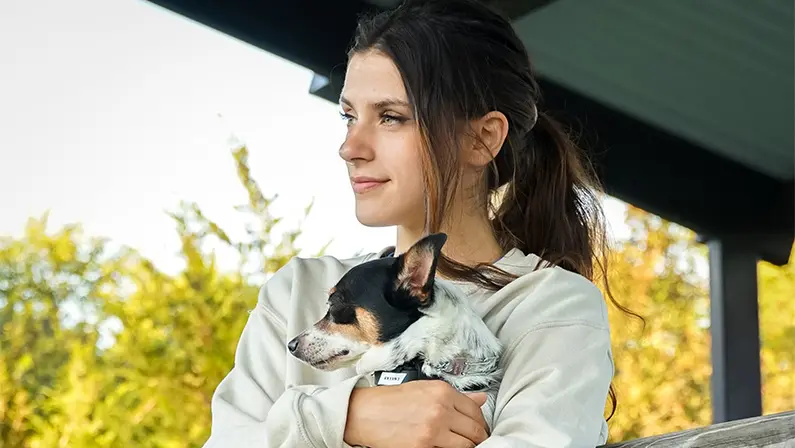pets
Build a Lasting Bond with Your Dog: Effective Techniques for a Well-Trained and Loving Companion

Training your dog requires a consistent and patient approach. Dogs thrive on routine and clear expectations. Maintaining a consistent training schedule, your dog will better understand what is expected of them. Patience is equally important, as it takes time for dogs to learn new behaviors and commands. For those looking for dog boarding and training Miami FL, structured programs can significantly enhance your dog’s obedience and overall behavior.
Patience is not just about waiting for your dog to understand commands; it’s also about maintaining a calm demeanor during the training sessions. A stressed or frustrated trainer can negatively influence the training outcomes, making the process longer and less enjoyable for you and your dog. Maintaining a calm atmosphere also helps create a positive learning environment where your dog is more likely to succeed. Consistent efforts will pay off in the long run, leading to a well-mannered and happy pet you can confidently take out in public or have around guests.
Training Techniques That Work
Adopting effective training techniques is crucial for your dog’s success. Several methods have proven to be effective:
- Positive Reinforcement: Rewards like treats and praise can enhance your dog’s desire to learn. This technique strengthens the bond between you and your dog. Studies have shown that positive reinforcement speeds up the training process and creates a positive learning environment for your pet. It focuses on rewarding good behavior, encouraging your dog to repeat actions that earn them praise and treats, leading to faster learning and a stronger bond between you and your pet.
- Clicker Training: A clicker marks the desired behavior immediately, followed by a reward. This method effectively teaches dogs complex commands. Research indicates that clicker training can be particularly useful in reducing unwanted behaviors and promoting more desirable actions. The clicking and rewarding mechanism helps communicate what is expected from your dog, making it an effective tool for training various behaviors and tricks.
These techniques can significantly improve your training results and make the process more enjoyable for you and your dog. Positive reinforcement and clicker training are scientifically backed methods that emphasize clear communication and positive experiences, which are essential for successful dog training.
Common Training Mistakes to Avoid
While training your dog, it’s essential to avoid common mistakes that can hinder progress or even cause behavioral issues:
- Inconsistency: Ensure everyone in the household is on the same page with training commands and rules. Inconsistent commands can confuse your dog and delay progress. Consistency ensures that your dog receives the same messages from everyone, making it easier for them to understand and follow commands.
- Negative Reinforcement: Avoid using punishment-based methods as they can create fear and anxiety in your dog. Negative reinforcement can lead to a breakdown in communication between you and your pet, resulting in adverse behavioral issues. It’s better to focus on positive reinforcement techniques that encourage good behavior.
- Short Training Sessions: Dogs have short attention spans, so limiting sessions to 10-15 minutes can prevent frustration. Regular short sessions are more effective than infrequent, longer ones. These shorter, consistent training sessions help keep your dog engaged and willing to learn without overwhelming it. This aligns with expert recommendations from organizations such as the ASPCA.
Avoiding these common pitfalls can help create a smoother and more effective training process. Focusing on consistency, positive reinforcement, and appropriately timed training sessions can increase the likelihood of success and foster a positive relationship with your pet.
Addressing Behavioral Issues
Behavioral issues such as barking, chewing, or aggression can be challenging. Understanding the root cause of these behaviors is crucial as each issue can stem from different sources, such as anxiety, boredom, or lack of proper socialization. Expert advice and guidance can be invaluable when tackling these problems. Strategies include adequate exercise, mental stimulation, and positive reinforcement for good behavior. Resources like the ASPCA can provide expert insights and methodologies for resolving common behavioral issues.
Addressing behavioral problems often requires a multi-faceted approach. For example, excessive barking might be addressed by identifying and mitigating the triggers causing your dog to bark and rewarding them for staying quiet. Chewing can be deterred by providing appropriate chew toys and removing access to inappropriate objects. Professional advice can offer tailored solutions based on your dog’s specific issues and needs, improving the overall effectiveness of your training efforts.
Building Good Habits
Early training helps establish good habits, setting the foundation for a well-behaved adult dog. Teaching commands such as “sit,” “stay,” and “come” can begin as early as eight weeks old. Regular practice and reinforcement ensure these commands are understood and followed consistently.
Establishing a routine early makes the process smoother and more effective. Puppies are like sponges, quickly absorbing information during their developmental stages. Starting early allows you to shape their behaviors and habits before any undesirable patterns take hold. For more tips, check out PetMD’s advice on basic dog training methods.
Furthermore, early training can help with socialization, teaching your dog to interact appropriately with other animals and people. This can prevent issues such as fearfulness or aggression later in life. By investing time in early training, you are setting up your dog for a lifetime of good behavior and positive interactions.
Benefits of Professional Training Services
Sometimes, professional help is necessary. Professional trainers can offer customized training plans and address specific behavioral issues. They bring experience and expertise, often speeding up the training process. In addition, professional trainers can provide guidance and support, ensuring the dog and owner are confident and successful in their training journey.
Professional training services can be especially beneficial for dealing with complex behavioral issues or providing advanced training beyond basic commands. Trainers can also offer socialization opportunities with other dogs in a controlled environment, which is crucial for developing well-rounded pets. By enlisting professional help, you can use their specialized knowledge and experience, leading to better and faster results.
Professional trainers offer tailored dog training tips and techniques, providing ongoing support and resources for effective and long-lasting home training. This is especially beneficial for first-time owners or those facing specific challenges.
pets
Discover the world of Ramos Buchones

‘Pigeons of the Ramos Buchones breed, commonly known as Buchones Pouters, are highly regarded for their exceptional qualities. Because of their unique appearance and intriguing behavior, pigeon fanciers all around the world have fallen in love with these birds.
The History of Ramos Buchones
Understanding the history of Ramos Buchones is essential to appreciate their significance fully. These birds have a rich and storied past, dating back centuries. From their origins to their role in various cultures, we’ll explore it all.
Characteristics of Ramos Buchones
· Physical Features
The physical characteristics that set Ramos Buchones apart are readily apparent. These pigeons are stunning due to their lengthened bodies, vibrant plumage, and massive stature.
· Behavior and Temperament
Ramos Buchones can be recognized by their unique appearance. These pigeons are beautiful to look at because of their lengthened bodies, vibrant plumage, and large stature.
· Breeding Ramos Buchones
Understanding the demands and preferences of Ramos Buchones is essential for successful breeding. We’ll explain how to choose compatible partners for breeding and how to keep the nest clean and safe for the chicks.
Caring for Ramos Buchones
These gorgeous pigeons require special attention to ensure their health and longevity. Learn what works in terms of feeding them, housing them, and taking care of them medically.
Ramos Buchone’s in Culture
The Ramos Buchone’s family has left an indelible imprint on many civilizations around the world. We will discuss the cultural significance of these birds, including their roles as symbols of love and peace and in religious ceremonies.
Training Ramos Buchone’s
Both bird lovers and Ramos Buchones can benefit from training sessions. Find out how to train your bird and develop a close relationship with it.
Challenges in Keeping Ramos Buchone’s
Ramos Buchone’s are fascinating birds, but caring for them is not without its difficulties. We’ll talk about typical problems that property owners have, and how to fix them.
Conclusion
In conclusion, Ramos Buchone’s are a fascinating breed of pigeon due to its unusual appearance and lengthy past. These birds will leave an indelible mark on your heart, whether you’re a seasoned pigeon fancier or a beginner to the world of avian aficionados. Discover the fascinating history, stunning landscapes, and fascinating cultures of Ramos Buchones’ world.
FAQs:
What is the origin of the name “Ramos Buchone’s”?
The word “Buchone’s” is said to refer to their signature pouting behavior, hence the term “Ramos Buchone’s” likely has Spanish roots.
What makes Ramos Buchone’s unique among pigeon breeds?
In addition to their very lengthy bodies and remarkable appearance, Ramos Buchone’s are also easily recognizable by their peculiar cooing calls.
Are Ramos Buchone’s suitable for beginners in pigeon keeping?
Although fascinating, Ramos Buchone’s present unique challenges for novice pet owners.
What is the average lifespan of a Ramos Buchon?
The average lifespan of a healthy Ramos Buchone’s is between 10 and 15 years.
Do Ramos Buchone’s require a specialized diet?
Including a wide range of grains and seeds in a Ramo’s Buchones diet is helpful, thus the answer is yes.
Can Ramos’Buchones be kept as indoor pets?
Although Ramos’Buchones can be kept in cages indoors, they really flourish in large outdoor aviaries.
-

 Education5 months ago
Education5 months agoExploring Dayforce: Revolutionizing the Trader Joe’s Employee Experience
-

 Health5 months ago
Health5 months ago10desires.org Health: Your Guide to a Better Well-being
-

 Education5 months ago
Education5 months agoSDC Website sign in: Your Gateway to Success
-

 Education5 months ago
Education5 months agoUnlocking the Power of Education: 73147 Education
-

 FOOD5 months ago
FOOD5 months agoCrybaby Noodles: A Delightful Culinary Adventure
-

 FASHION5 months ago
FASHION5 months agoEmbracing Elegance: The Allure of Oval Engagement Ring
-

 Education5 months ago
Education5 months agoNavigating the Labyrinths of Learning: The Importance of school hallways
-

 ENTERTAINMENT5 months ago
ENTERTAINMENT5 months agoUnveiling the Magic: Exploring the World of RusticOTV
